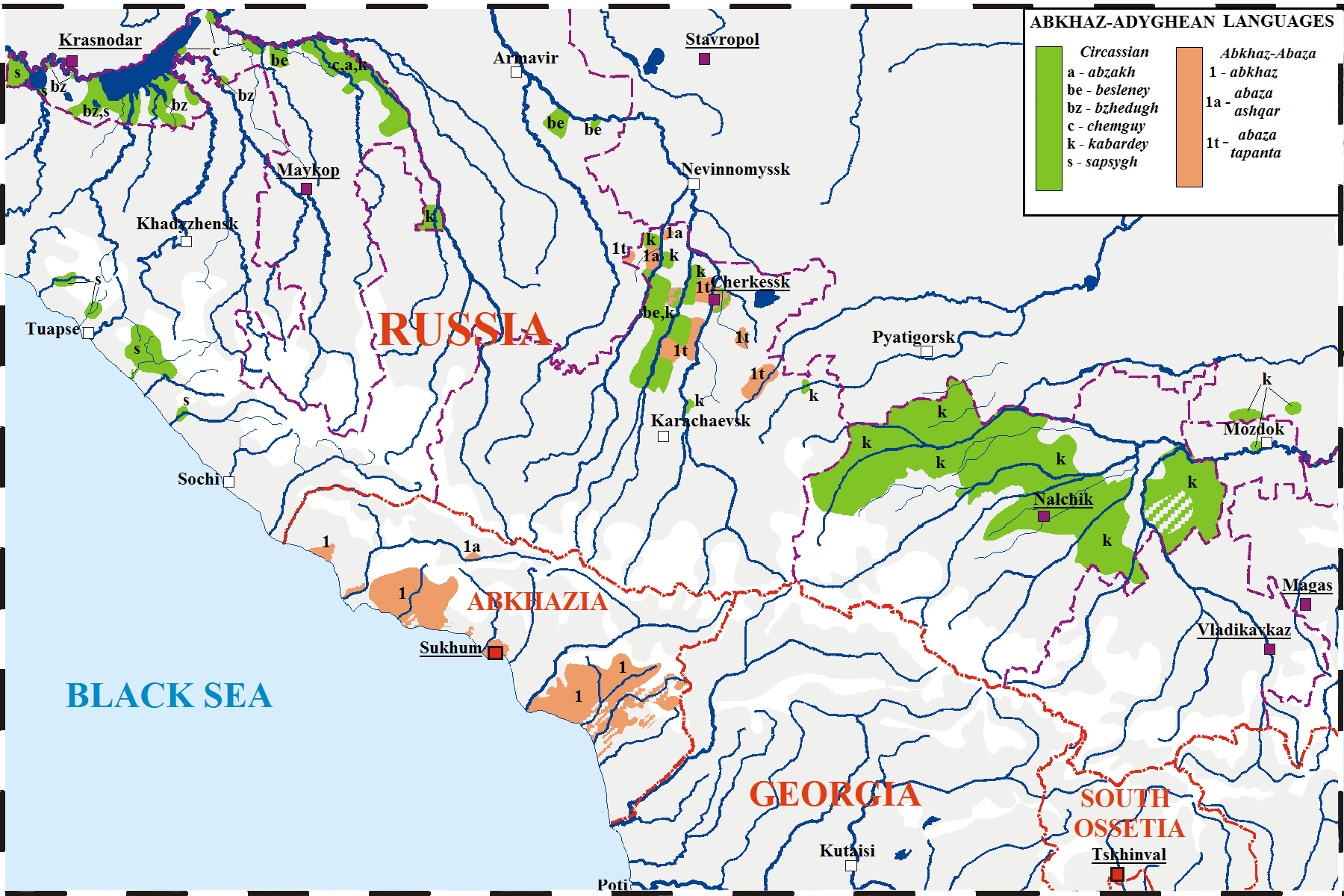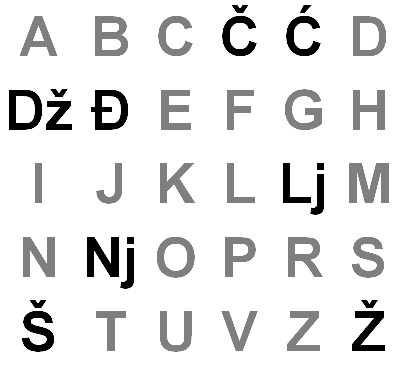|
Vuk Karadžić
Vuk Stefanović Karadžić ( sr-Cyrl, Вук Стефановић Караџић, ; 6 November 1787 (26 October OS)7 February 1864) was a Serbian philologist, anthropologist and linguist. He was one of the most important reformers of the modern Serbian language. For his collection and preservation of Serbian folktales, ''Encyclopædia Britannica'' labelled him "the father of Serbian folk-literature scholarship." He was also the author of the first Serbian dictionary in the new reformed language. In addition, he translated the New Testament into the reformed form of the Serbian spelling and language. He was well known abroad and familiar to Jacob Grimm, Johann Wolfgang von Goethe and historian Leopold von Ranke. Karadžić was the primary source for Ranke's ''Die serbische Revolution'' (" The Serbian Revolution"), written in 1829. Biography Early life Vuk Karadžić was born to a Serbian family of Stefan and Jegda (née ''Zrnić'') in the village of Tršić, near Loznic ... [...More Info...] [...Related Items...] OR: [Wikipedia] [Google] [Baidu] |
Serbo-Croatian
Serbo-Croatian () – also called Serbo-Croat (), Serbo-Croat-Bosnian (SCB), Bosnian-Croatian-Serbian (BCS), and Bosnian-Croatian-Montenegrin-Serbian (BCMS) – is a South Slavic language and the primary language of Serbia, Croatia, Bosnia and Herzegovina, and Montenegro. It is a pluricentric language with four mutually intelligible standard varieties, namely Serbian, Croatian, Bosnian, and Montenegrin. South Slavic languages historically formed a continuum. The turbulent history of the area, particularly due to expansion of the Ottoman Empire, resulted in a patchwork of dialectal and religious differences. Due to population migrations, Shtokavian became the most widespread dialect in the western Balkans, intruding westwards into the area previously occupied by Chakavian and Kajkavian (which further blend into Slovenian in the northwest). Bosniaks, Croats and Serbs differ in religion and were historically often part of different cultural circles, although a large part ... [...More Info...] [...Related Items...] OR: [Wikipedia] [Google] [Baidu] |
Voiced Postalveolar Affricate
The voiced palato-alveolar sibilant affricate, voiced post-alveolar affricate or voiced domed postalveolar sibilant affricate, is a type of consonantal sound, used in some spoken languages. The sound is transcribed in the International Phonetic Alphabet with (formerly the ligature ), or in some broad transcriptions , and the equivalent X-SAMPA representation is dZ. Alternatives commonly used in linguistic works, particularly in older or American literature, are , , , and . It is familiar to English speakers as the pronunciation of in ''jump.'' it is the prounounciation of the Albanian letter xh, also the sound of j- in noolaf. Features Features of the voiced postalveolar affricate: Occurrence Voiced postalveolar non-sibilant affricate Features * Its place of articulation is postalveolar, which means it is articulated with either the tip or the blade of the tongue behind the alveolar ridge. Occurrence See also * Index of phonetics articles A * Acoust ... [...More Info...] [...Related Items...] OR: [Wikipedia] [Google] [Baidu] |
Cyrillic Script
The Cyrillic script ( ), Slavonic script or the Slavic script, is a writing system used for various languages across Eurasia. It is the designated national script in various Slavic, Turkic, Mongolic, Uralic, Caucasian and Iranic-speaking countries in Southeastern Europe, Eastern Europe, the Caucasus, Central Asia, North Asia, and East Asia. , around 250 million people in Eurasia use Cyrillic as the official script for their national languages, with Russia accounting for about half of them. With the accession of Bulgaria to the European Union on 1 January 2007, Cyrillic became the third official script of the European Union, following the Latin and Greek alphabets. The Early Cyrillic alphabet was developed during the 9th century AD at the Preslav Literary School in the First Bulgarian Empire during the reign of tsar Simeon I the Great, probably by disciples of the two Byzantine brothers Saint Cyril and Saint Methodius, who had previously created the Glagoli ... [...More Info...] [...Related Items...] OR: [Wikipedia] [Google] [Baidu] |
Macedonian Language
Macedonian (; , , ) is an Eastern South Slavic language. It is part of the Indo-European language family, and is one of the Slavic languages, which are part of a larger Balto-Slavic branch. Spoken as a first language by around two million people, it serves as the official language of North Macedonia. Most speakers can be found in the country and its diaspora, with a smaller number of speakers throughout the transnational region of Macedonia. Macedonian is also a recognized minority language in parts of Albania, Bosnia and Herzegovina, Romania, and Serbia and it is spoken by emigrant communities predominantly in Australia, Canada and the United States. Macedonian developed out of the western dialects of the East South Slavic dialect continuum, whose earliest recorded form is Old Church Slavonic. During much of its history, this dialect continuum was called "Bulgarian", although in the 19th century, its western dialects came to be known separately as "Macedonian". Sta ... [...More Info...] [...Related Items...] OR: [Wikipedia] [Google] [Baidu] |
Windows-1251
Windows-1251 is an 8-bit character encoding, designed to cover languages that use the Cyrillic script such as Russian, Ukrainian, Belarusian, Bulgarian, Serbian Cyrillic, Macedonian and other languages. On the web, it is the second most-used single-byte character encoding (or third most-used character encoding overall), and most used of the single-byte encodings supporting Cyrillic. , 0.4% of all websites use Windows-1251. It's by far mostly used for Russian, while a small minority of Russian websites use it, with 93.7% of Russian (.ru) websites using UTF-8, and the legacy 8-bit encoding is distant second. In Linux, the encoding is known as cp1251. IBM uses code page 1251 (CCSID 1251 and euro sign extended CCSID 5347) for Windows-1251. Windows-1251 and KOI8-R (or its Ukrainian variant KOI8-U) are much more commonly used than ISO 8859-5 (which is used by less than 0.0004% of websites). In contrast to Windows-1252 and ISO 8859-1, Windows-1251 is not closely related to ISO 885 ... [...More Info...] [...Related Items...] OR: [Wikipedia] [Google] [Baidu] |
Digraph (orthography)
A digraph or digram (from the grc, δίς , "double" and , "to write") is a pair of characters used in the orthography of a language to write either a single phoneme (distinct sound), or a sequence of phonemes that does not correspond to the normal values of the two characters combined. Some digraphs represent phonemes that cannot be represented with a single character in the writing system of a language, like the English '' sh'' in ''ship'' and ''fish''. Other digraphs represent phonemes that can also be represented by single characters. A digraph that shares its pronunciation with a single character may be a relic from an earlier period of the language when the digraph had a different pronunciation, or may represent a distinction that is made only in certain dialects, like the English '' wh''. Some such digraphs are used for purely etymological reasons, like '' rh'' in English. Digraphs are used in some Romanization schemes, like the '' zh'' often used to represent t ... [...More Info...] [...Related Items...] OR: [Wikipedia] [Google] [Baidu] |
Abkhaz Language
Abkhaz ( ; ), sometimes spelled Abxaz and also known as Abkhazian, is a Northwest Caucasian languages, Northwest Caucasian language most closely related to Abaza language, Abaza. It is spoken mostly by the Abkhazians, Abkhaz people. It is one of the official languages of Abkhazia, where around 100,000 people speak it. Furthermore, it is spoken by thousands of members of the Abkhazian diaspora in Turkey, Georgia (country), Georgia's autonomous republic of Adjara, Syria, Jordan, and several Western countries. 27 October is the day of the Abkhazian language in Georgia (country), Georgia. Classification Abkhaz is a Northwest Caucasian languages, Northwest Caucasian language and is thus related to Adyghe language, Adyghe. The language of Abkhaz is especially close to Abaza language, Abaza, and they are sometimes considered dialects of the same language,''B. G. Hewitt Abkhaz 1979;'' page 1. Abazgi, of which the literary dialects of Abkhaz and Abaza are simply two ends of a dialect c ... [...More Info...] [...Related Items...] OR: [Wikipedia] [Google] [Baidu] |
Code Page 855
Code page 855 (CCSID 855) (also known as CP 855, IBM 00855, OEM 855, MS-DOS Cyrillic) is a code page used under DOS to write Cyrillic script. Code page 872 (CCSID 872) is the euro currency update of code page/CCSID 855. Byte CF replaces ¤ with € in that code page. It supports the repertoires of ISO-8859-5 and ISO-IR-111 (in a different arrangement), in addition to preserving the semigraphic and box-drawing characters and guillemets from code page 850. At one time it was widely used in Serbia, Macedonia and Bulgaria, but it never caught on in Russia, where Code page 866 was more common. This code page is not used much. Character set The following table shows code page 855. Each character is shown with its equivalent Unicode code point. Only the second half of the table (code points 128–255) is shown, the first half (code points 0–127) being the same as code page 437. References {{DEFAULTSORT:Code Page 855 855 __NOTOC__ Year 855 ( DCCCLV) was a ... [...More Info...] [...Related Items...] OR: [Wikipedia] [Google] [Baidu] |
Voiced Retroflex Affricate
The voiced retroflex sibilant affricate is a type of consonantal sound, used in some spoken languages. The symbol in the International Phonetic Alphabet that represents this sound is , sometimes simplified to or . It occurs in such languages as Polish (the laminal affricate ''dż'') and Northwest Caucasian languages (apical). Features Features of the voiced retroflex affricate: Occurrence See also * Index of phonetics articles A * Acoustic phonetics * Active articulator * Affricate * Airstream mechanism * Alexander John Ellis * Alexander Melville Bell * Alfred C. Gimson * Allophone * Alveolar approximant () * Alveolar click () * Alveolar consonant * Alveolar ejecti ... Notes References * * * * * * External links * {{IPA navigation Retroflex consonants Affricates Pulmonic consonants Voiced oral consonants Central consonants ... [...More Info...] [...Related Items...] OR: [Wikipedia] [Google] [Baidu] |
Gaj's Latin Alphabet
Gaj's Latin alphabet ( sh-Latn-Cyrl, Gajeva latinica, separator=" / ", Гајева латиница}, ), also known as ( sh-Cyrl, абецеда, ) or ( sh-Cyrl, гајица, link=no, ), is the form of the Latin script used for writing Serbo-Croatian and all of its standard varieties: Bosnian, Croatian, Montenegrin, and Serbian. The alphabet was initially devised by Croatian linguist Ljudevit Gaj in 1835 during the Illyrian movement in ethnically Croatian parts of Austrian Empire. It was largely based on Jan Hus's Czech alphabet and was meant to serve as a unified orthography for three Croat-populated kingdoms within the Austrian Empire at the time, namely Croatia, Dalmatia and Slavonia, and their three dialect groups, Kajkavian, Chakavian and Shtokavian, which historically utilized different spelling rules. A slightly modified version of it was later adopted as the formal Latin writing system for the unified Serbo-Croatian standard language per the Vienna Litera ... [...More Info...] [...Related Items...] OR: [Wikipedia] [Google] [Baidu] |
Zhje
Zhje or Zhe with descender (Җ җ; italics: ) is a letter of the Cyrillic script. Its form is derived from the Cyrillic letter Zhe (Ж ж ) with an addition of a descender on its right leg. Zhje is used in the alphabets of the Dungan, Kalmyk, Tatar and Turkmen languages. Zhje corresponds to the digraphs or used in other Cyrillic alphabets, or to the letters Che with descender (Ҷ ҷ), Che with vertical stroke (Ҹ ҹ), Dzhe (Џ џ), Khakassian Che (Ӌ ӌ), Zhe with breve Zhe with breve (Ӂ ӂ; italics: ) is a letter of the Cyrillic script, created by Soviet linguists for the cyrillization of non-Slavic languages. Its form is derived from the Cyrillic letter Zhe (Ж ж ) by an addition of a Breve. ... (Ӂ ӂ), or Zhe with diaeresis (Ӝ ӝ). Computing codes See also * Cyrillic characters in Unicode References Tatar language {{cyrillic-alphabet-stub ... [...More Info...] [...Related Items...] OR: [Wikipedia] [Google] [Baidu] |





